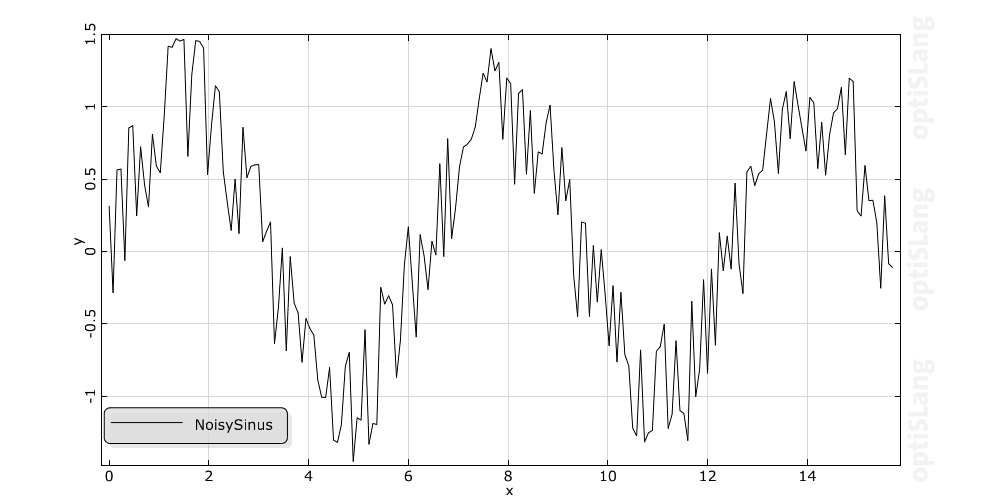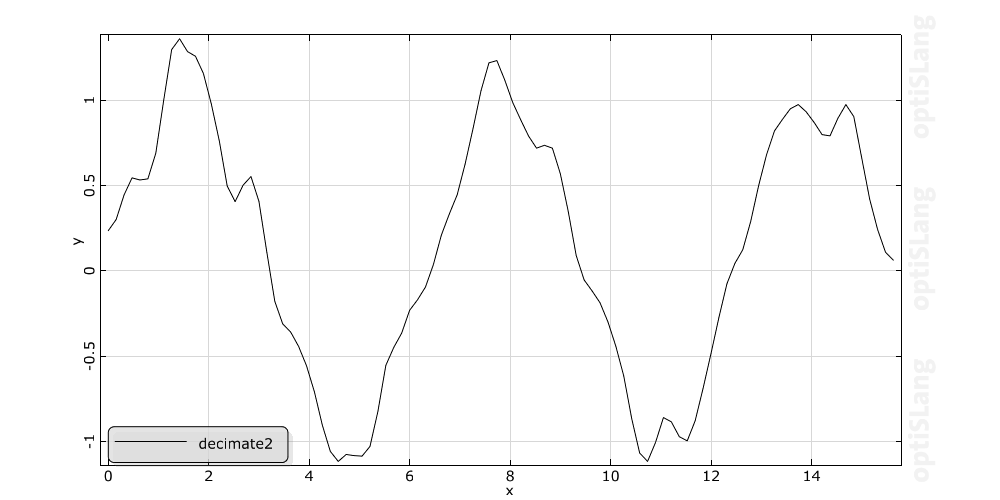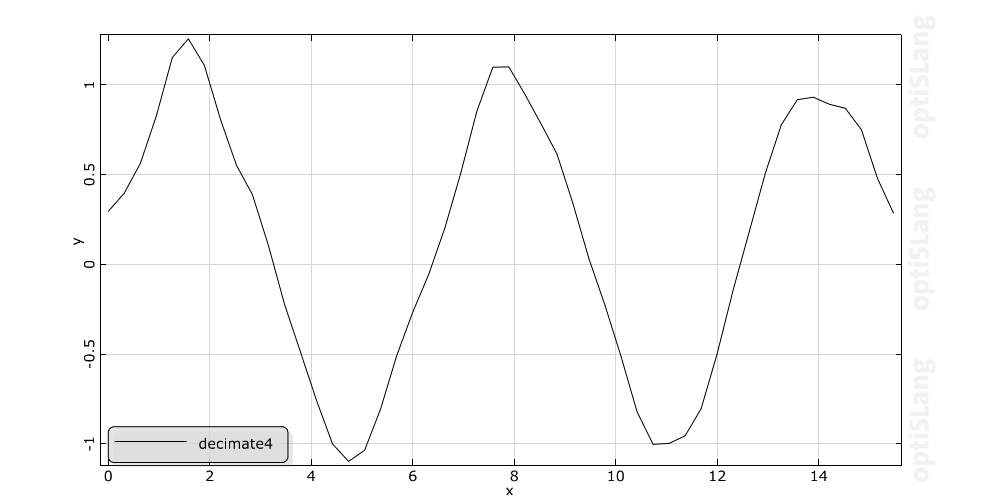Reduces a large real time signal S to a smaller, representative one by the factor d > 1. First an anti-aliasing second-order Butterworth filter removes frequencies which are too high (according to r > 2, the ratio of the new sampling rate to the cutoff frequency) and then the filter decimates the signal by factor d > 1 to produce a new one. If S is not equally spaced it will be interpolated before filtering by using the interpolation type it and the slope parameter dstart and dend.
Example with different factors d:
Unfiltered Signal

Decimate-2nd-order Filtered Signal


Decimate-4th-order Filtered Signal


Decimate-8th-order Filtered Signal


Syntax
decimateFilter(S, d, r, it, dstart, dend)
Types
| Variable Name | Value Type | Variable Type | ||
|---|---|---|---|---|
| Arguments: | S | real | signal, xy-data | |
| d | real | scalar, vector | ||
| r | real | scalar, vector | ||
| it | InterpolationType | LINEAR, QUAD, SPLINE | ||
| dstart | real | scalar | ||
| dend | real | scalar | ||
| Result: | real | signal, xydata | ||
Calculator Input
Use the button to complete the operation.


